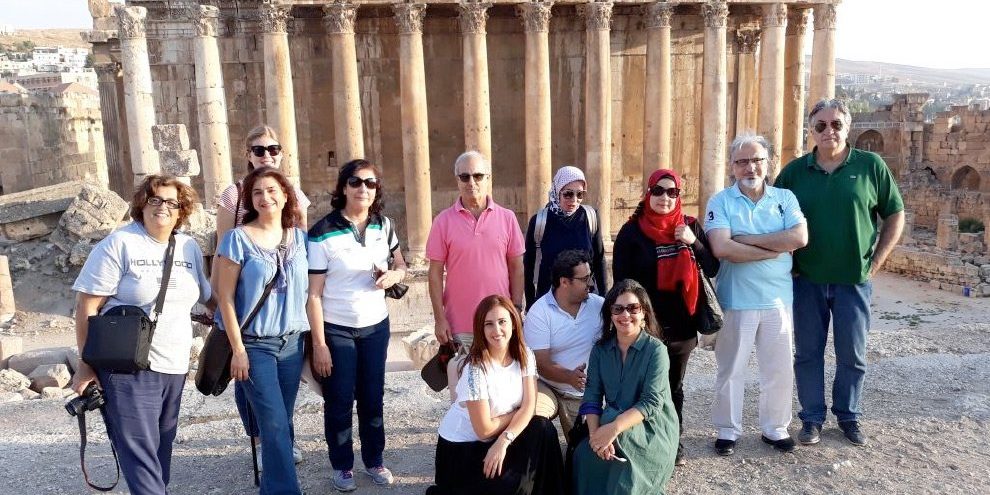As part of the Lebanese Association for History’s (LAH) project to learn about the various histories in Lebanon, a trip was organized by Jamal Arafat to Baalbek to explore the city’s unique cultural heritage and to foster dialogue and future collaboration with history teachers in Baalbek. The tour began at Baalbek’s old train station. Build by the Ottomans in 1902, the station was a part of the Aleppo Railway connecting the Middle East with Europe until it was closed down in the 1970s, due to the Lebanese Civil War. The station, however, is still standing and one can still see the rails that once where used to transport goods from Istanbul to Palestine. Following this historical Ottoman side, we visited a more modern, but no less fascinating creation: The Great Umayyad Mosque of Baalbek. Covered in mosaics, bright colors and mirrors on the walls, this Shi’a-mosque offered a true experience of Shia Islamic architecture. To get an idea of Baalbek’s prominent position within the Ottoman Empire, we went from here to the historical Palmyra Hotel where key figures such as Charles de Gaulle and Mustafa Kemal Ataturk have spent the night. Before lunch, we visited the Melkite Roman Catholic Archbishop of Baalbek, Elias Rahal, for a discussion about the role of the archbishop in strengthening social cohesion in the area.
After lunch, the members of LAH had organized a meeting with the Baalbek Cultural Council, the Rif Cultural Movement, the French Cultural Center, the Media Forum, history teachers from Baalbek and professors and other specialists. The aim for the meeting was to share experiences with teaching history in Lebanon, and to discuss further possibilities for collaboration. The tour ended with a one-hour guided tour through the magnificent ruins of the temples of Venus, Bacchus and Jupiter with the sun going down behind us.

